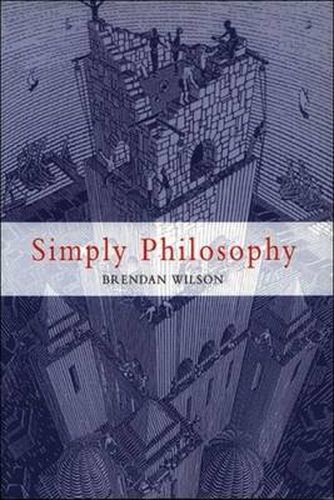Readings Newsletter
Become a Readings Member to make your shopping experience even easier.
Sign in or sign up for free!
You’re not far away from qualifying for FREE standard shipping within Australia
You’ve qualified for FREE standard shipping within Australia
The cart is loading…






In this vivid and incisive guide, philosophy comes to life. Using the central idea of causality as a guiding principle, Brendan Wilson shows how the history of philosophy becomes a very clear and natural sequence of events. The resulting perspective reveals the deep connections between the problems of science, mind and reality, freedom and responsibility, knowledge, language, truth and religion. Newcomers to philosophy will be able to engage with the great questions and ideas of the western tradition. The writing is clear and jargon-free, while the ‘short-chapter’ format gives the reader time to pause and think at each step along the way. Style and layout put accessibility first and the many illustrations include explanatory diagrams and drawings as well as pictures of philosophers from Aristotle to Wittgenstein. General Features * Encourages critical and independent thinking * Written in an engaging, non-technical style * Makes clear sense of philosophy’s rich and complex history * Presents a distinctive argument * Provides a wide range of case studies and examples from philosophy, science and law Text Features * Chapter overviews * Chapter sub-headings for ease of use * Carefully-chosen quotations from philosophers ancient and modern * End of chapter discussion points * An open and attractive page layout * Lavish and relevant illustrations, including photographs, diagrams, explanatory boxes and drawings
$9.00 standard shipping within Australia
FREE standard shipping within Australia for orders over $100.00
Express & International shipping calculated at checkout
In this vivid and incisive guide, philosophy comes to life. Using the central idea of causality as a guiding principle, Brendan Wilson shows how the history of philosophy becomes a very clear and natural sequence of events. The resulting perspective reveals the deep connections between the problems of science, mind and reality, freedom and responsibility, knowledge, language, truth and religion. Newcomers to philosophy will be able to engage with the great questions and ideas of the western tradition. The writing is clear and jargon-free, while the ‘short-chapter’ format gives the reader time to pause and think at each step along the way. Style and layout put accessibility first and the many illustrations include explanatory diagrams and drawings as well as pictures of philosophers from Aristotle to Wittgenstein. General Features * Encourages critical and independent thinking * Written in an engaging, non-technical style * Makes clear sense of philosophy’s rich and complex history * Presents a distinctive argument * Provides a wide range of case studies and examples from philosophy, science and law Text Features * Chapter overviews * Chapter sub-headings for ease of use * Carefully-chosen quotations from philosophers ancient and modern * End of chapter discussion points * An open and attractive page layout * Lavish and relevant illustrations, including photographs, diagrams, explanatory boxes and drawings